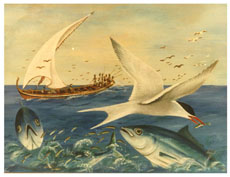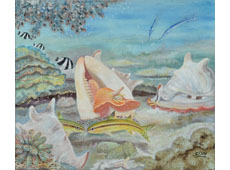As all of us know very well, we Maldivians are a pious Muslim community who have it enshrined in our constitution that to be a Maldivian necessarily means to be a Muslim. If we give up our Muslim identity, our rights as a Maldivian citizen are taken away automatically.
How this has been accommodated within the framework of the International Convention on Human Rights (of which we are a signatory) is still a mystery to me. For it says that every human being has the right to the freedom of conscience. And what is freedom of conscience if we cannot choose our religion?
Recently I found myself discussing the issue with some friends and we thought of a scenario where a Maldivian waiter is serving non-Muslims in a resort. The waiter will serve all alcoholic beverages that the guests (referred in this article as non-Muslims) request for. He will also catch glimpses of them wearing bikinis and frolicking about in the white sandy beaches. And yet, he himself is strictly prohibited from any such behavior, not only because of his job description as a waiter, but because, if he chooses to engage in any of these activities he is facilitating his guests with, he will find himself a criminal. I told my friends that I found this contradiction a bit troublesome. I understand that some Maldivians justify this state of things by citing various reasons.
Even though the Maldivian constitution was last revised as recently as 2008, it clearly states that a Maldivian citizen can only be a Muslim. And from this follows other laws and regulations which prohibit Maldivians from consumption of alcohol and any other behavior that is deemed outside of the Muslim moral code. And tourism regulation in the country is perhaps a good example of this. We facilitate tourists to travel thousands of miles and spend as much dollars to travel to the beautiful islands of the Maldives (of which we are the inhabitants) and do things we believe will only take them closer to hell; drink alcohol, engage in sex outside marriage, wear revealing clothes in public, etc. So we have a situation where we ourselves refrain from the bad things but actually help others who do not belong to our community to do these very sinful things. The same laws of the land has different provisions to different persons, and while some laws describe us as having certain unalienable rights, others deny us those very same rights.
I have often thought of bringing this up with the MPs that represent the community I live in, who are individuals vested with the responsibility to scrutinize the laws of the country so as to make them more compatible with our beliefs and outlook. However, after seeing them on TV recently and hearing them speak on the radio, I have come to the conclusion that a majority of these MPs will not warm up to such an idea. I find some of them highly insular and provincial. And sometimes I wonder what they are trying to achieve by being in the parliament.
A friend recently commented that ‘Maldivians are the niggers of this country’, encapsulating the feelings I have tried to state above. He was referring to the black Americans in USA who were deprived of even the basic human rights until the Civil Rights Movement. It is one thing to have attitudes about things, but it is quite another to enshrine them in the highest code of regulation for a community, the Constitution.
All comment pieces are the sole view of the author and do not reflect the editorial policy of Minivan News. If you would like to write an opinion piece, please send proposals to [email protected]


